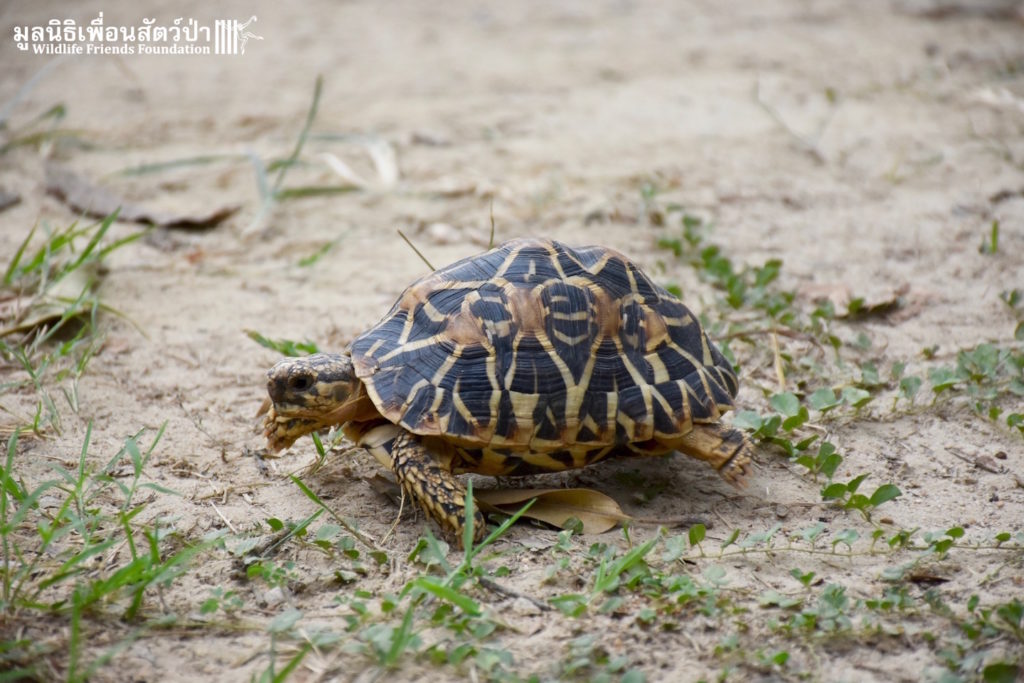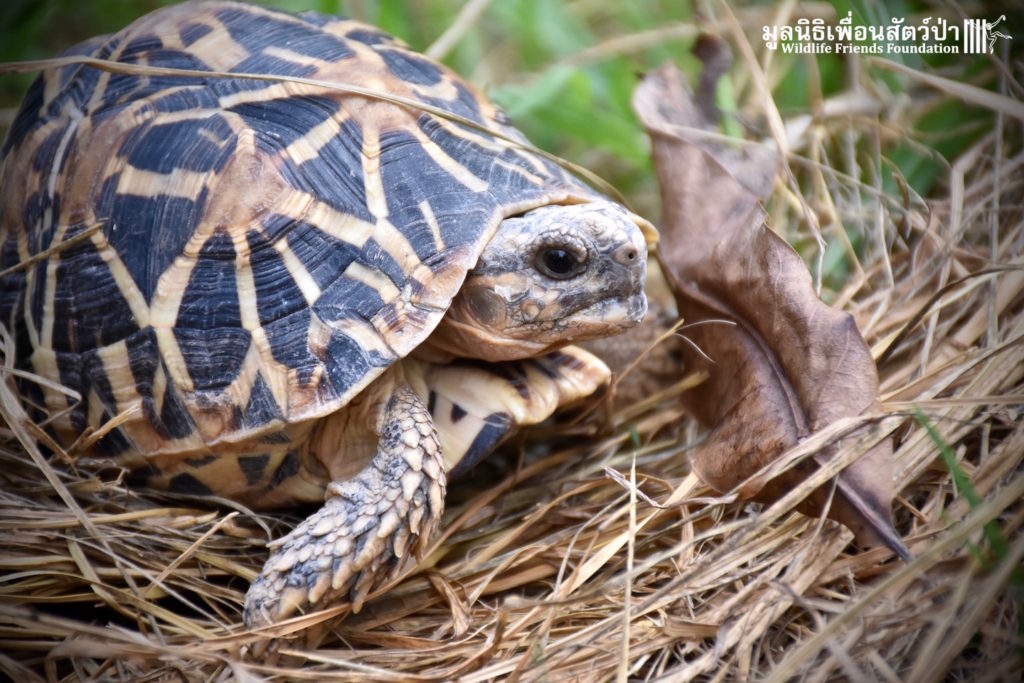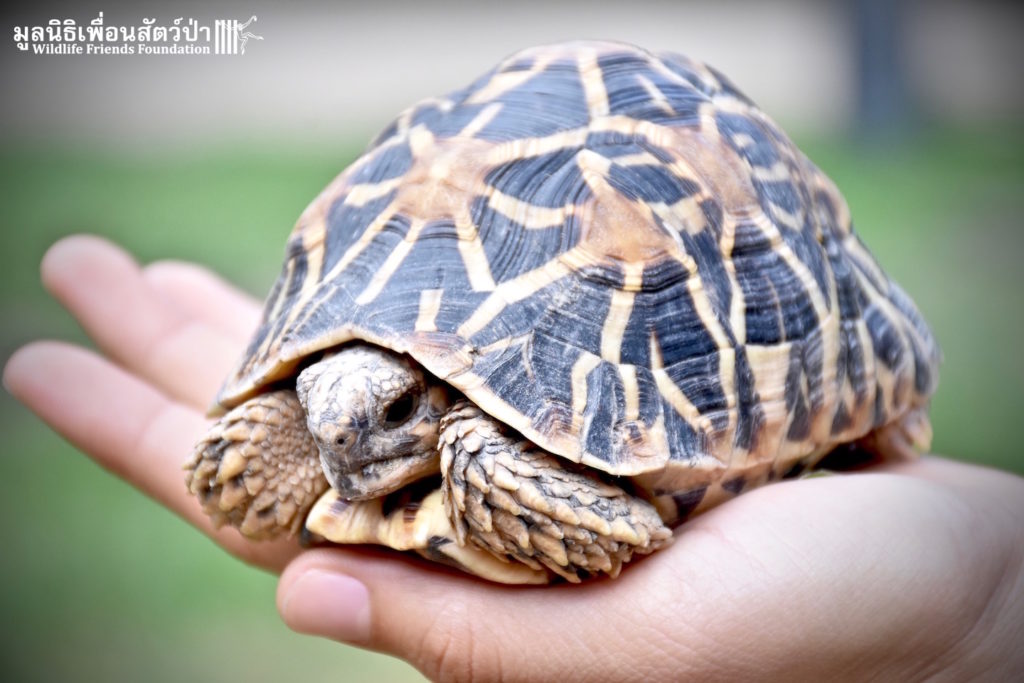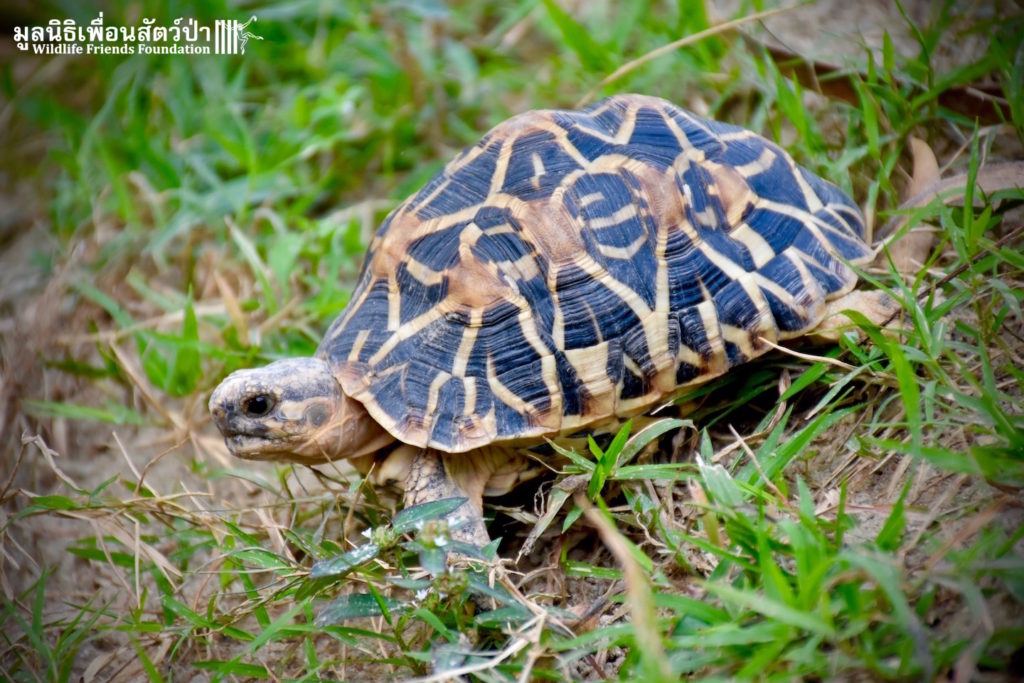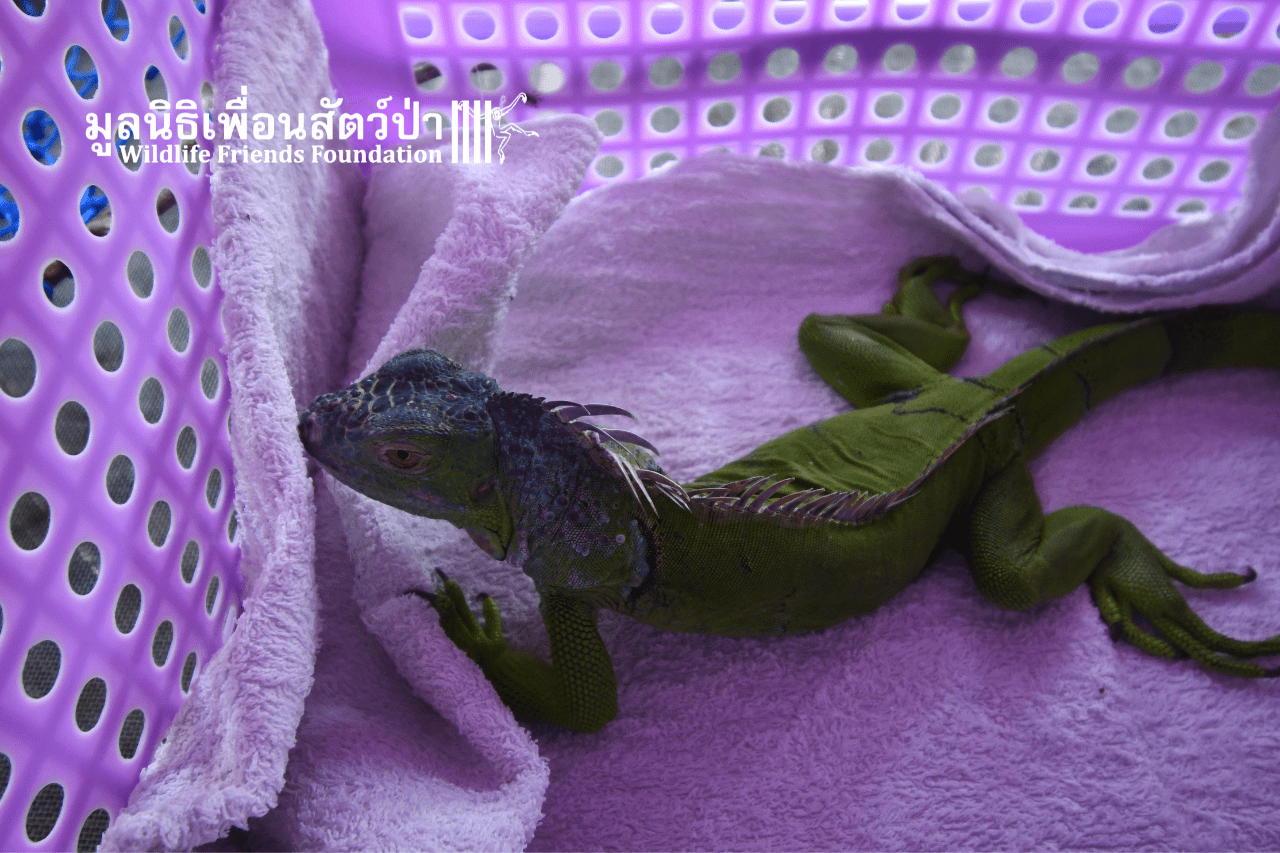Another quick rescue and release! This giant Asian pond turtle, named Disney, was rescued and…
Endangered Indian Star Tortoise Arrives at WFFT
Another victim of the international illegal pet trade has been brought into the WFFT Wildlife Rescue Centre, meet ‘Tess’ the Indian star tortoise (Geochelone elegans). The people that purchased Tess from a pet shop were unaware of which species she was, and how endangered they are, with international laws to regulate the trade in such specimens. This little member of the Testudinidae family is thousands of miles away from her homeland, it is most likely that she was illegally poached from the wild and transported to South-east Asia destined for the ever increasing trade in exotic pets, particularly tortoises.
The Indian star tortoise is listed as Vulnerable (VU) by the IUCN Red list of Threatened Species, studies have shown that the illegal wildlife trade is increasingly targeting this species to meet apparently increasing international demand for use as ‘exotic pets’ A recent conservative estimate of annual pet-trade export is 10,000 to 20,000 animals (mostly juveniles). Most of the pet trade involves small to medium- sized animals, few exceeding 10 cm reported the illegal collection of at least 55,000 (mostly juvenile) tortoises from just one location from India over a period of one year. Extensive conversion of their habitat to less suitable agricultural land is likely to reduce populations further in the future.
There are concerns that this species is being illegally smuggled from India into pet markets in Asia, Europe, and the United States. However, the majority of animals appear to be destined for use as exotic pets in Asian countries, such as Thailand, China, and Malaysia. This species was the most frequent illegally traded tortoise seized by Thai authorities between 2008 and 2013 (5966 individuals during 15 cases) and is the most commonly observed tortoise at the infamous Chatuchak Weekend Market in Bangkok, Thailand.Since 1975, this species (as Testudinidae spp.) has been included on Appendix II of the Convention on International Trade in Endangered Species of Wild Fauna and Flora (CITES). Consequently, international trade in specimens can take place if an export permit or re-export permit is acquired.
However, there are concerns that legislation in other Asian countries is being exploited to facilitate illegal wildlife trade. For example, this tortoise is not currently protected under Thailand’s Wild Animal Reservation and Protection Act (WARPA) making it difficult for enforcement authorities to distinguish illegally traded wild sourced individuals from those that have been legally bred in captivity. As such review of existing legislation relating to the commercial use of this species in key consumer countries is warranted (IUCN).
Tess’s owners had purchased her 3 years ago for 7,000 THB (200 USD) illegally from a pet shop in Thailand. Having only found out what species she was as they tried to export her out of the country as they were emigrating. They had cared for her very well, she had the whole run of a large garden and has been fed a proper diet. Although her owners researched how to care for a pet tortoise and looked after her well, she is still a wild animal and wild animals never make suitable pets. Consumers must be educated and all those involved in the illegal trade must to be prosecuted. For now Tess is settling into her new life at WFFT and soon be introduced to some other small rescued tortoise in a large open forested enclosure.

